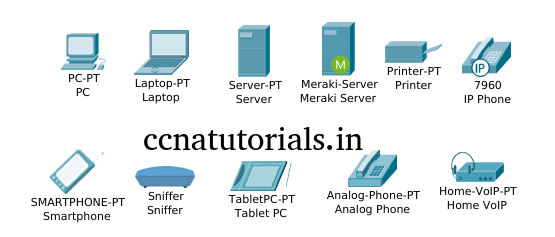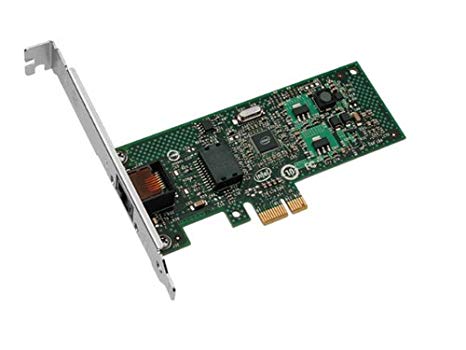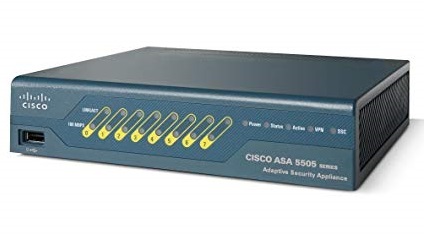In this article I describe the Networking devices for CCNA exam 200-301. The concern of Networking devices for CCNA related to the equipment used in a network. The networking devices provides the data transfer between different nodes of the network. It became helpful to appear in CCNA exam after understanding the networking devices for CCNA. Network devices are the equipment’s which helps to flow the data between nodes like switch, hub, router, wireless router etc.
The main purpose of networking is to share the resources available in the network. For example suppose you have a small network consisting 20 computers for office work. You don’t need to purchase a separate printer for each computer. You can use a single printer for all the devices connected with the network. Similarly you can use a single scanner and other devices with sharing with all computers of the network. To understand IOT it is necessary to understand the networking devices for CCNA

In today scenario some devices supports to work on the internet. For example you have a internet connection in your office and at home too. You can use the devices of your office from your home over the internet. The technology changing day by day. In today scenario the SOHO concept running all over the world. SOHO stands for Small Office Home Office which allow to run a small business from home with online support. These all things depends on the latest technology working around us.
Nodes or End Devices in networking devices for CCNA
Nodes is the important term in networking devices for CCNA. The Nodes are the equipment which are connect with some networking devices. The Nodes may be servers, computer, printer, smartphone etc. Nodes are generally identify by network addresses or IP address.
In a network, devices able to exchange information with each other with the help of switch, router etc. The shared resources may be any application, videos, images, email, data storage, printers etc. Sharing of resources in a network done via flowing of network packets. Nodes are the computers, smartphones in networking basics for CCNA.
Many types of devices used for connectivity of nodes in a network. Later we will discuss briefly about these networking devices. some example of these networking devices are hubs, switch, bridges, routers, modem etc. Computer or nodes commonly used Network interface card (NIC) for connectivity in a network.
Network interface card (NIC) in networking devices for CCNA

NIC is a hardware which allow a computer to connect with any network. It play the main role in the networking devices family. It may be connected via co-axial, RJ45, Fibre or wireless. NIC are identified by its MAC address. Each NIC have a unique MAC address.
MAC address is a combination of six octets. MAC address of NIC are maintained by IEEE to avoid conflict. In mostly nodes the Network interface card comes inbuilt. In case of failure of inbuilt NIC the external NIC card can be used for connectivity with the network.
Repeaters and hubs in networking devices for CCNA
A Repeater works to re-transmit the data on a network. Data Transmission have its own limits such as distance. To overcome this limit repeaters used in a network. Repeater receive the data and re-transmit the same to increase the travel length of data.
By using repeaters the travel distance of a data can be increases up to kilometers apart. Hub is a combination of multiple repeaters. Hubs and repeaters work on physical layer. In present scenario hubs and repeaters are mostly replaced by switches. Later we will discuss about the difference between switch and hubs.
Bridges in networking devices for CCNA
Bridges are works on data link layer. Bridge is a networking device. It used to connect the devices within a network. Bridges are more intelligent than the hub or repeaters. Hubs broadcast the data to every port while Bridges maintains MAC table of devices. Bridges transmit the data to concern MAC address only. Bridges also called layer 2 device.
Switches in networking devices for CCNA

A network switch is a device which connects the nodes. Switches works on layer 2 of OSI reference model. Switches forwards and filters frames between ports based on the destination MAC address. A switch is different from hub. hub forward the data to all ports. Switch forward the data to destination port only. Destination port identified by filtering the MAC table. If destination MAC address is not found then switch transmit the data to all ports except the source port. Layer 2 switch are also known as intelligent switch.
Switches are of two types managed and unmanaged. Unmanaged switches have less facility. it can not be programmed . Managed switches programmed as per requirement. A managed switch is configurable. Managed switch have facility of security, flexibility. Switch ports can be bind with permanent MAC address. Data travelling through the switch can be monitor and filter according to requirement. Managed Switches also configured for creating VLAN. VLAN works on layer 2 of OSI reference model.
Routers in networking devices for CCNA

A router is a layer 3 device. Router connects two different networks. Router may be physical or virtual device. A Router calculate the best way for data travelling. Router is working on its own Internetwork Operating System(IOS). Router works like a gateway for a network. A Router can connect many networks at a time. Numbers of Ethernet card in a router can be change as per requirement. Router works on Internet Protocol.
A router identify a packet’s destination IP address.Router search it in a routing table. Router sent the packet to next hope according to routing table. A routing table define the default route.
Modems in networking devices for CCNA
Modem stands for Modulator-Demodulater. Modems used to connect network nodes via wire or wireless. A Modems does not transmit digital network traffic. Modems commonly used for telephone lines. Modems play a main role in networking devices family.
A modem converts the digital signal to analog and vice versa. A computer network works on digital signal. Digital signal can not be transmit to a far distance destination. Modem converts the digital signal into analog signal. This analog signal transmit on telephone line to destination. At destination reverse process done by modem. Modem are available according to data transfer speed.
Firewalls in networking devices for CCNA

A firewall is a network device for controlling network security. Firewalls filter the incoming and outgoing traffic for a network or computer. Firewall placed before the gateway in a LAN. Firewall is most useful for prevent of cyber attacks or system hacking. A Firewall is an important part of networking devices. Firewall works on the predefined rule programmed in it.
Gateway in networking devices for CCNA
A gateway works for data transmit and receive in a network. Router is best example of a gateway. Gateway converts the protocol and works on all layers of OSI reference model. Wireless router in a home network is works as a gateway.
WAP in networking devices for CCNA
WAP stands for Wireless Access Point or generally known as Wi-Fi hotspot. Wi-Fi adopter used to connect the clients with the network. In some devices like laptop and smart phone the adopter comes built in. Wi-Fi stands for Wireless Fidelity. In some networking devices like computer we need to install the external adopter manually. The function of wireless adapter is to transmit and receive the data in the form of radio wave. Which provides the wireless connectivity with the network.
The principle and working of wireless networking is very similar to the radios and smart phones. The Wi-Fi devices transmit and receive the radio wave which contains the data in the form of 1 and 0’s. The difference is that the modulation is different type it is not amplitude or frequency modulation.

The working frequency of WAP is 2.4 Ghz and 5 Ghz. These frequency are private frequency like private IP address in networking. Some IEEE standards of various Wi-Fi techniques are below.
IEEE standards for working of wireless communication.
Wireless communication works on the 802.11 IEEE standards. But there are many versions of 802.11 standards which used different parameters for wireless communication.
802.11a standards for working of wireless communication
The 802.11a standards allow to work on 5 Ghz frequency upto 54 mbps speed transmission. The modulation type of 802.11a standard is OFDM. OFDM stands for Orthogonal Frequency Division Multiplexing which is very efficient to distinguish the data signal of 1 and 0’s format. Mostly Wi-Fi devices works on this standard or we can say this standard supports by many Wi-Fi devices. It is the basic standard of Wi-Fi communication. The manufacture of this standard hardware is little bit costly.
802.11b standards for working of wireless communication
The 802.11b standards is a cheap standard of Wi-Fi communication. The small cost equipment used this standard. The maximum data transfer speed of 802.11b standard is 10 Mbps. In home or office appliances uses this standard because of its manufacture cost and limited speed. The working frequency of 802.11b standard is 2.4 Ghz which is also used by the common Bluetooth devices.
802.11g standards for working of wireless communication
The working frequency of 802.11g standard is very similar to the 802.11b. It’s working frequency is 2.4 Ghz. The difference with 802.11b is only of speed as it can handle upto 54 Mbps data transfer speed. It also used the modulation OFDM similar to 802.11a.
802.11n standards for working of wireless communication
The 802.11n is the combination of all the above standards a,b and g. It supports both 2.4 Ghz and 5 Ghz frequency. The data handling speed is very fast than the others as it can handles upto 140 Mbps speed. The cost of its hardware is little bit expensive than others. The most important factor of this standard is that it can handle 4 steam simultaneously without interfere each other. Mostly Wi-Fi router made to follow this standard in today scenario.
802.11ac standards for woking of wireless communication
The 802.11ac is the latest standard of wireless communication. This standard follows the previous 802.11n standard that allows the wireless communication on 2.4 Ghz and 5 Ghz both. The speed of 802.11ac standard wireless communication is unbelievable upto 450 Mbps.
In this article I described the networking devices for CCNA exam 200-301. I hope you found this article helpful. For any query or suggestion on the subject you may drop a comment below or contact us. We always welcome your suggestions.






